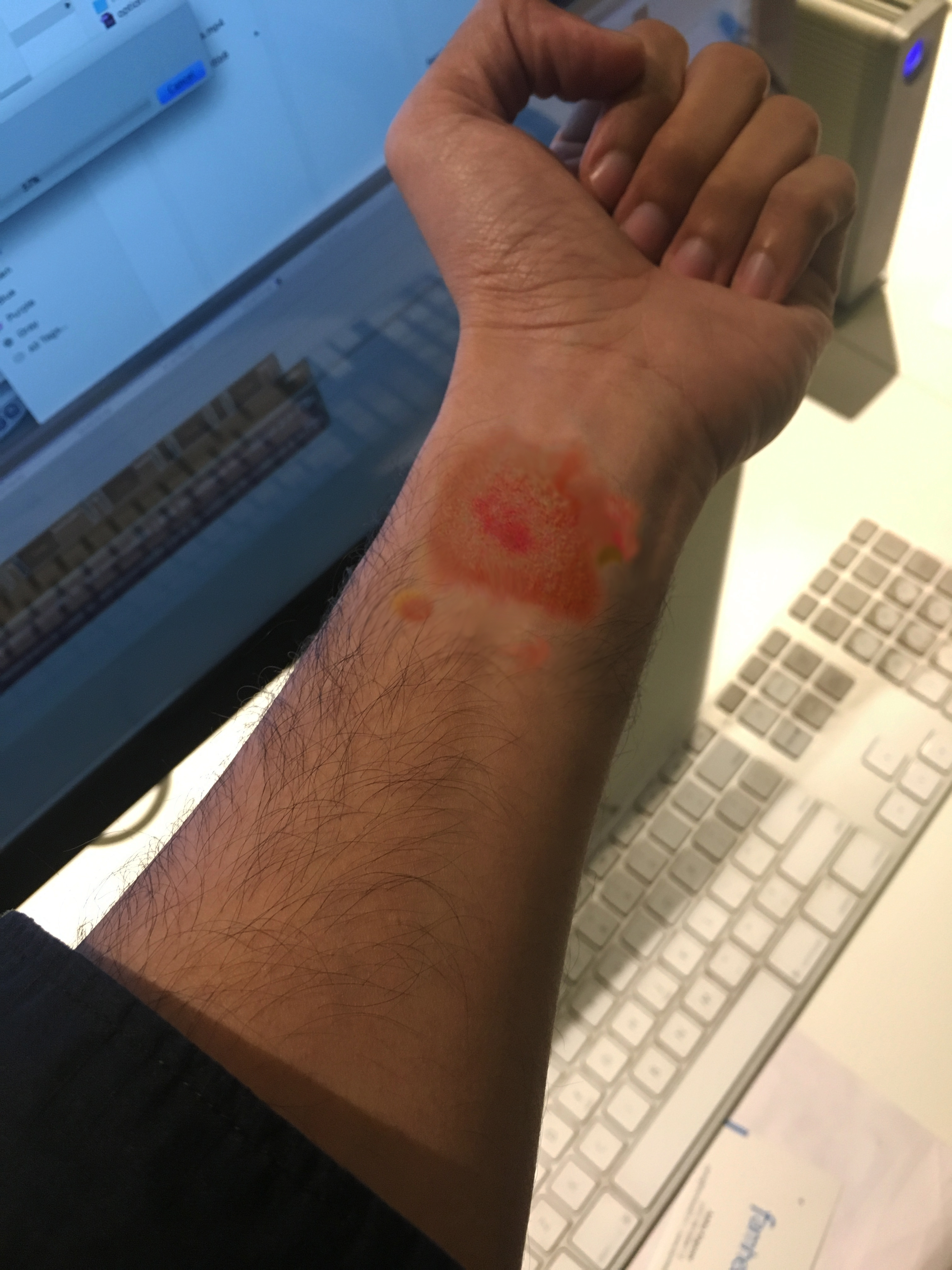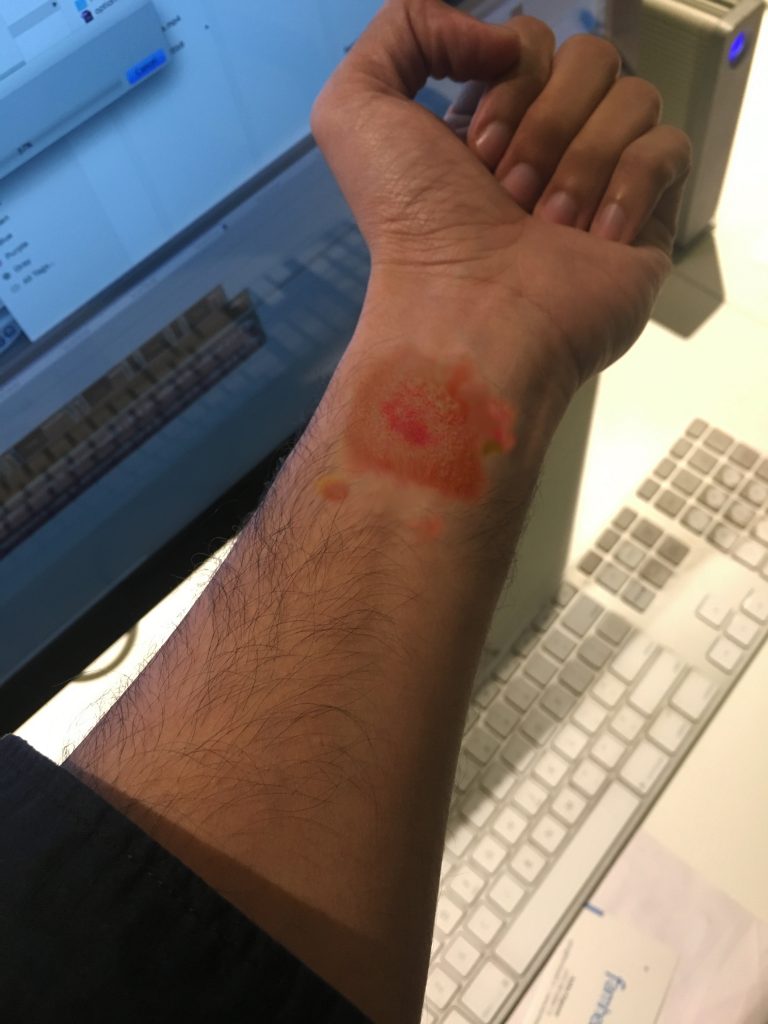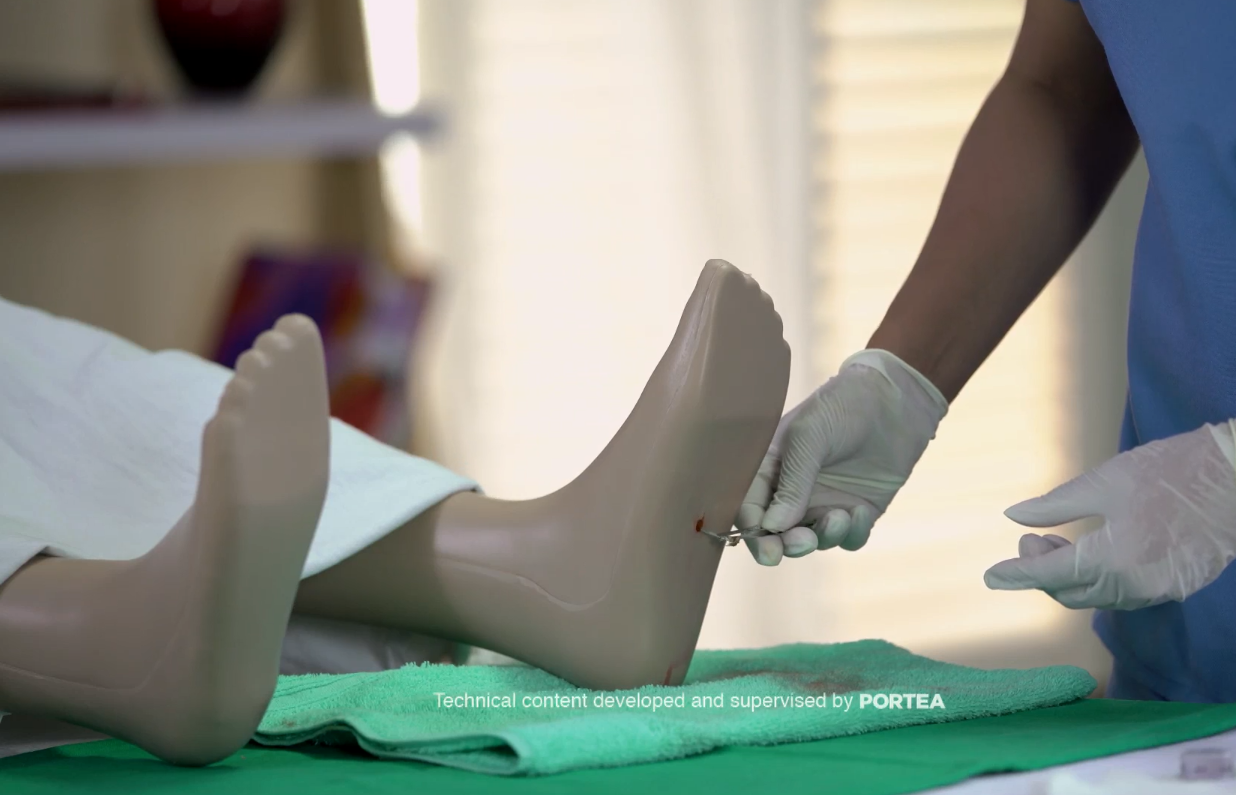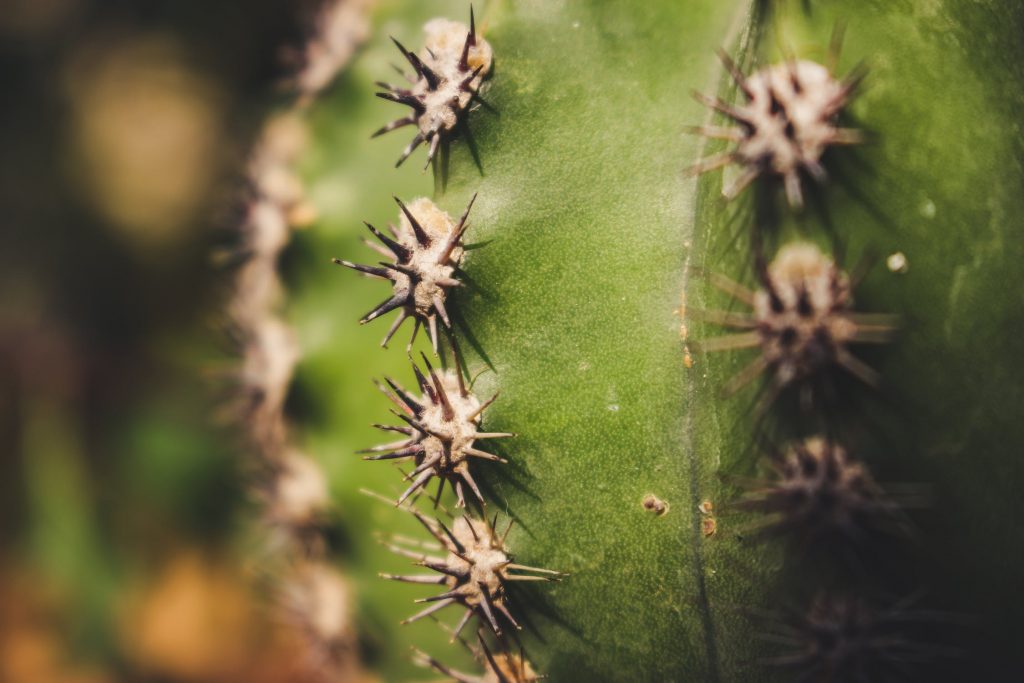Burns
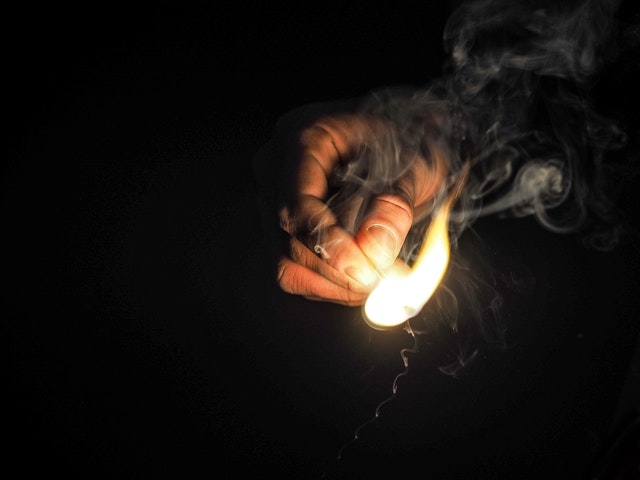
What are burns?
Burns are damage to skin and deeper tissue caused by contact with fire, heat, electricity, radiation, or caustic chemicals.
Burns are classified according to the depth and extent of the skin damage, in the following way.
- First-degree burns: the skin is red, painful and very sensitive to touch. The damaged skin may be slightly moist from leakage of the fluid in the deeper layers of the skin.
- Second-degree burns: the damage is deeper and blisters usually appear on the skin. The skin is still painful and sensitive.
- Third-degree burns: the tissues in all layers of the skin are dead. Usually there are no blisters. The burned surface can appear normal, white, black (charred), or bright red from blood in the bottom of the wound. Damage to the sensory nerves in the skin can mean that third-degree burns may be quite painless as the burned skin lacks sensation to touch. A skin graft is usually necessary for significant areas of third-degree burns.
First aid for burns
The first thing to do is to limit the extent of the damage, and prevent the burn from becoming worse.
- Taking care that you do not put yourself at risk from the cause of the burns, move the person away from the danger area. Smother flames with a blanket or douse the person with water but beware of electricity or caustic chemicals.
- Remove clothing or jewellery from the burned area but don’t try to peel back any clothing that is stuck to the skin.
- The burnt area must be cooled by being placed under tepid running water. The water should not be unpleasantly cold.
- Keep the damaged area under running water for at least one hour, or longer if the pain has not stopped. Up to four hours of this treatment can be beneficial. However, in severe burns it is more important to get the person to hospital for treatment, so don’t let this delay calling the ambulance.
- Meanwhile keep the person warm a lot of heat can be lost from large burns so put a blanket or clothing around the non-injured areas.
- First-degree burns, eg mild sunburn, may not require this treatment although it may help to soothe discomfort.
- Put cling film or a plastic bag over the burn before moving the person to hospital, but don’t wrap the cling film tightly round a limb.
- Do not put any creams on the burn at this stage, but you can give the person simple pain relief such as paracetamol.
What complications can occur?
- When skin is burned, it loses its ability to protect, which increases the risk of infection. So it is important that the damaged area be thoroughly cleansed within the first six hours and that the area is kept clean while it is healing.
- If, after a few days, there are signs of an infection – ie the skin is becoming increasingly red, hot, and swollen, and the victim experiences a throbbing pain or feels generally unwell or has a fever – contact a doctor or your practice nurse.
- Severe burns can cause scarring.
- In cases of extensive severe burns, the body may lose large quantities of fluid. This can disturb the blood circulation and cause problems with the body’s salt balance. As a result the person may go into ‘shock’ with a low blood pressure and rapid pulse. Such injuries should be assessed at your local Accident and Emergency department.
- Heat exhaustion and heatstroke can also occur if the body temperature rises too high (for example, after excessive exposure to hot sun, often with sunburn). Watch out for extreme tiredness, rapid pulse, headache, and confusion. Help the person to cool down in the shade, with tepid water to drink and get urgent medical help if you are worried.
What can be done to prevent burns?
Be fire-conscious in the home. The kitchen is the most dangerous room in the house, and the most likely place for burns and scalds to occur. If you have small children in the house, fit a safety gate to keep them out of the kitchen.
When cooking, keep small children away from hot drinks, pans and kettles, barbecues and other open flames. Always put pans to the back of the hob if possible and turn handles to the back away from where small hands might reach.
Never throw water over oil fires, such as in a chip pan, because this will cause a fire explosion that can have severe consequences. Instead the fire should be smothered by covering the pan with a damp cloth.
Buy a proper fire-smothering blanket and keep it somewhere in the kitchen where it is easily accessible.
Hot water in the bathroom is another risk – so when there are small children in the house, fill baths by running the cold tap first. Fit a mixer to the taps and never leave a child alone in or near the bath.
Always used a fixed guard around open fires in the house.
Bonfires and camp fires are another cause of serious burns.
Never light them by throwing petrol and a lighted match at them. Behave responsibly around them and keep young children well away.
It’s become a popular game among young people at music festivals to throw gas cyclinders from barbeques into the camp fires.
This is extremely dangerous and has resulted in some very serious burn injuries, sometimes among innocent bystanders.
Festival goers should be warned against this behaviour.
Take standard advice to protect yourself from sunburn – Slip, Slop, Slap!
Slip on baggy clothing such as an oversized T shirt, slop on suncream and slap on a hat.
Keep children in the shade especially in intense sun in the middle of the day, and frequently reapply high sun protection factor (SPF) suncream especially if they are in and out of the swimming pool
To read more on First Aid, click on the link below.



